Why Are Some People More Creative Than Others?
Why Are Some People More Creative Than Others?
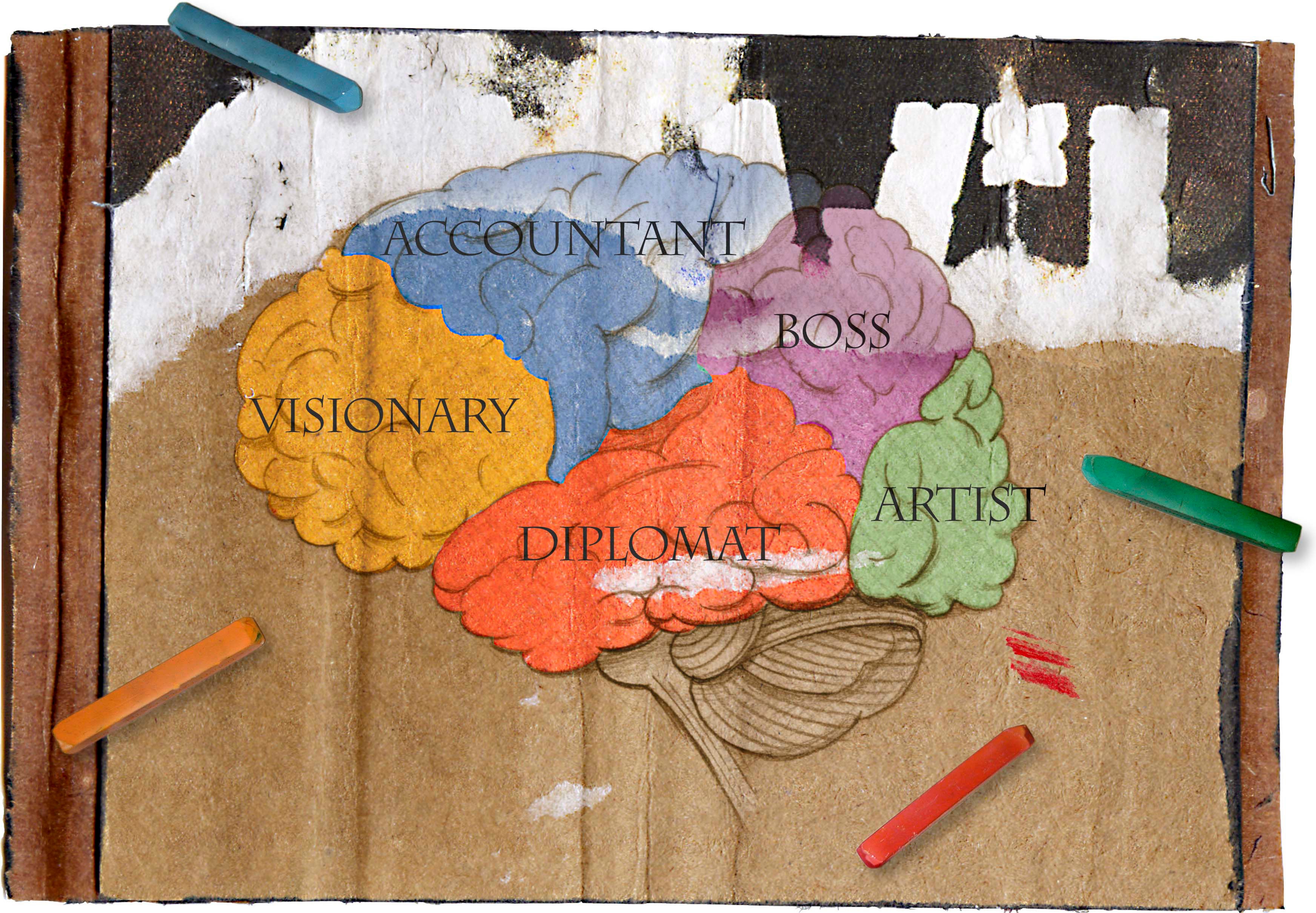
Creativity is often defined as the ability to come up with new and useful ideas. Like intelligence, it can be considered a trait that everyone—not just creative “geniuses” like Picasso and Steve Jobs—possesses in some capacity.
It’s not just your ability to draw a picture or design a product. We all need to think creatively in our daily lives, whether it’s figuring out how to make dinner using leftovers or fashioning a Halloween costume out of clothes in your closet. Creative tasks range from what researchers call “little-c” creativity – making a website, crafting a birthday present or coming up with a funny joke—to “Big-C” creativity: writing a speech, composing a poem or designing a scientific experiment.
Psychology and neuroscience researchers have started to identify thinking processes and brain regions involved with creativity. Recent evidence suggests that creativity involves a complex interplay between spontaneous and controlled thinking – the ability to both spontaneously brainstorm ideas and deliberately evaluate them to determine whether they’ll actually work.
Despite this progress, the answer to one question has remained particularly elusive: What makes some people more creative than others?
In a new study, my colleagues and I examined whether a person’s creative thinking ability can be explained, in part, by a connection between three brain networks.
Mapping the brain during creative thinking
In the study, we had 163 participants complete a classic test of “divergent thinking” called the alternate uses task, which asks people to think of new and unusual uses for objects. As they completed the test, they underwent fMRI scans, which measures blood flow to parts of the brain.
The task assesses people’s ability to diverge from the common uses of an object. For example, in the study, we showed participants different objects on a screen, such as a gum wrapper or a sock, and asked to come up with creative ways to use them. Some ideas were more creative than others. For the sock, one participant suggested using it to warm your feet—the common use for a sock—while another participant suggested using it as a water filtration system.
Importantly, we found that people who did better on this task also tended to report having more creative hobbies and achievements, which is consistent with previous studies showing that the task measures general creative thinking ability.
After participants completed these creative thinking tasks in the fMRI, we measured functional connectivity between all brain regions—how much activity in one region correlated with activity in another region.
We also ranked their ideas for originality: Common uses received lower scores (using a sock to warm your feet), while uncommon uses received higher scores (using a sock as a water filtration system).
Then we correlated each person’s creativity score with all possible brain connections (approximately 35,000), and removed connections that, according to our analysis, didn’t correlate with creativity scores. The remaining connections constituted a “high-creative” network, a set of connections highly relevant to generating original ideas.
Having defined the network, we wanted to see if someone with stronger connections in this high-creative network would score well on the tasks. So we measured the strength of a person’s connections in this network, and then used predictive modeling to test whether we could estimate a person’s creativity score.
The models revealed a significant correlation between the predicted and observed creativity scores. In other words, we could estimate how creative a person’s ideas would be based on the strength of their connections in this network.
We further tested whether we could predict creative thinking ability in three new samples of participants whose brain data were not used in building the network model. Across all samples, we found that we could predict—albeit modestly—a person’s creative ability based on the strength of their connections in this same network.
Overall, people with stronger connections came up with better ideas.
What’s happening in a ‘high-creative’ network
We found that the brain regions within the “high-creative” network belonged to three specific brain systems: the default, salience and executive networks.
The default network is a set of brain regions that activate when people are engaged in spontaneous thinking, such as mind-wandering, daydreaming and imagining. This network may play a key role in idea generation or brainstorming—thinking of several possible solutions to a problem.
The executive control network is a set of regions that activate when people need to focus or control their thought processes. This network may play a key role in idea evaluation or determining whether brainstormed ideas will actually work and modifying them to fit the creative goal.
The salience network is a set of regions that acts as a switching mechanism between the default and executive networks. This network may play a key role in alternating between idea generation and idea evaluation.
An interesting feature of these three networks is that they typically don’t get activated at the same time. For example, when the executive network is activated, the default network is usually deactivated. Our results suggest that creative people are better able to co-activate brain networks that usually work separately.
Our findings indicate that the creative brain is “wired” differently and that creative people are better able to engage brain systems that don’t typically work together. Interestingly, the results are consistent with recent fMRI studies of professional artists, including jazz musicians improvising melodies, poets writing new lines of poetry and visual artists sketching ideas for a book cover.
Future research is needed to determine whether these networks are malleable or relatively fixed. For example, does taking drawing classes lead to greater connectivity within these brain networks? Is it possible to boost general creative thinking ability by modifying network connections?
For now, these questions remain unanswered. As researchers, we just need to engage our own creative networks to figure out how to answer them.
This article was originally published on The Conversation. Read the original article.
ABOUT THE AUTHOR(S)
Roger Beaty is a Postdoctoral Fellow in Cognitive Neuroscience, Harvard University.
14 reasons why travelling with others is better than solo travel

In today’s world, a lot of people decide to travel solo. There are many reasons for that: difficulties with gathering people for travel, independence and sometimes it’s just a need to experience travel alone.
There are many travellers who think that trips with friends or family mean mainly disputes and lack of freedom.
During several past years, I tried different kinds of travel: trips with family, solo travel, travelling with a few friends and in a big group.
Now I know that having someone with you during your journeys is fun and gives a lot of satisfaction and there are quite a few disadvantages of solo travel.
Now I know that even if someone is not a party animal, or an introvert (here’s an interesting introvert’s guide how to survive to group travel), there are still lots of benefits of group travel and travelling with friends or family can turn out to be the best adventure we’ve ever had.
Together with fellow well-travelled bloggers, we’ve come up with 14 reasons why travel with friends or family seems like a better option compared to solo travel.
Table of contents
1. Group travel gives you safety in numbers
I’ve been on several very large group travels (tour bus travel with 50 people) and medium group sized travels (10-20 people) in the past 10 years. Comparing it to solo travel, there are many pros and cons to both, but lack of safety tends to be one of the biggest solo travel problems.
One of the most significant advantages of travelling with friends is the safety in numbers you get. I noticed that when I travel in really large groups, fewer people mess with us.
Scammers don’t target us, annoying promoters go away quickly, and we feel more at ease to enjoy our travels. Everyone in the group kinda just looks out for each other and it’s more intimidating for scammers and thieves to infiltrate a larger group. For me, it’s one of the most important advantages of group travel.
With the world the way it is today, I highly recommend group travel if safety is a big concern for you. You can also mix a group travel and solo travel during a trip to get a bit of both worlds (which is what I often do!).
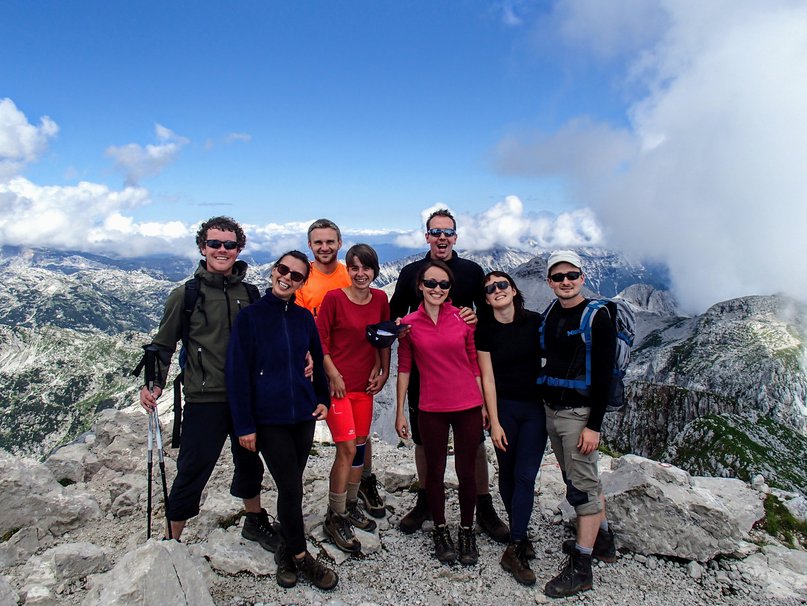
2. You have support while you travel with others
I travel with my wife. We got married while we were expats in Korea in 2013, and since then we’ve been digital nomads. Our dates were mostly weekend-long travels around the country.
She’s got my back, I’ve got hers – for me, it’s one of the biggest advantages of family travel. It might go without saying, but there’s a feeling of safety when you’re with someone you completely trust. There’s also something to be said about a second set of eyes making sure you don’t miss anything.
When does this play out most critically? Usually when we’re tired and trying to get from the airport to the Airbnb, and of course it’s when we’re carrying everything we own. One of us will get frustrated at something, and the other tries to keep a clear, calm head to get through it.
This doesn’t mean you should get married just to travel, of course — a lot of this also applies to any romantic partner. Going with a significant other means other stuff as well (ensuring their needs and interests are being met, taking some time away from each other), but I’d argue travelling with your partner is a lot better than going solo.
3. Group travel can be more economical
No matter what your budget is, you cannot ignore the economic side of travelling, and there’s no doubt that one of the biggest advantages of group travel is that it can be a big money-saver.
Finding budget-friendly accommodation as a solo traveller is not always that simple. If you’re not into hostel dorms, which is understandable, and you don’t fully trust solutions like Couchsurfing or Airbnb, a proper hotel room can be quite pricey for only one person. Splitting this cost between a group of people or even a couple is always helpful when you’re travelling on a budget.
Another significant expense is transportation. Sometimes taking a taxi or renting a car is inevitable, so you’d be happy to have other people paying for that as well.
Sharing meals can also be an advantage of group travel. It’s not customary in every country or every type of restaurant, but in many cases, it is acceptable and can save you a lot of money.
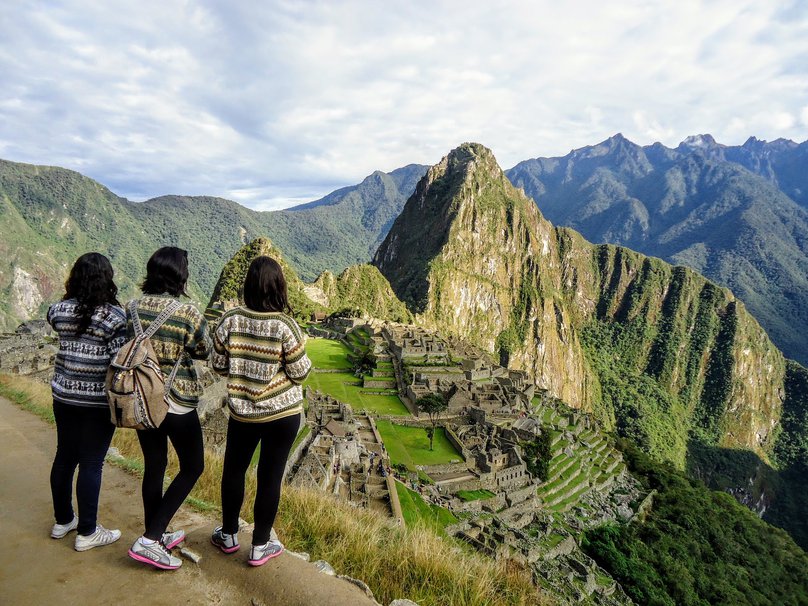
4. You reunite with friends who have moved or don’t live close
One of the most significant benefits of travelling in groups is that it’s a great way for me to reunite with friends that I no longer live near. I experienced this first when I was a kid, through my parents’ travels. Every year, we would spend a week visiting the beaches in North Carolina. We travelled there from Philadelphia to meet their group of friends who were scattered from Colorado to Indiana.
As an adult, I spent summers at Dewey Beach, in Delaware. There, I reunited with a group of friends that lived all over the Northeastern section of the United States. We shared a house every weekend and travelled there from Philadelphia, Baltimore, and Washington, DC. For six summers, we spent weekends together in the beach house and even planned off-season trips to each other’s cities and elsewhere. These trips included white-water rafting and camping or just nights out and staying over in someone’s apartment for the weekend. We were air-mattress weekend warriors, and group travel was a lot of fun. Best of all, it helped us maintain close friendships despite the distance.
The tradition has continued in recent years, as my partner and I moved from America to Europe. With even more distance between us, my friends have continued our tradition of group travel. Now internationally, group travel helps us to maintain our friendships across the ocean.
We have lived in Copenhagen for two and a half years and have hosted many of our friends here, just like we used to host weekends at home in Philadelphia. The group travel has also enabled us to visit other locations. This fall we travelled to Prague and Munich for Oktoberfest. The trip was spectacular and while we all enjoyed the experiences, the best part of the group trip was reuniting.
5. You have someone to take your photos
I went on a solo trip once and although I met some amazing people, for a photographer like me it is a real bonus to travel with someone, and preferably someone who has an idea about photography!
Unfortunately, Instagram seems to favour photos with a person as the subject, and you see just how bad some people are at taking photos once you ask a random person to take a photo of you.
Aside from the perfect Instagram photo, it’s nice to have some memories with the people you are travelling with. It is always easier if someone else in the group can take nice photos.
I have had some experiences with bad photographers. For example, one person completely ignored the building I wanted a photo with, or someone else actually took a photo where 80% was the floor and then tiny me with my head almost chopped off!
I now travel with my boyfriend who is a photographer and it makes it much easier if you like to have photos, to travel with someone who has a vague idea about photography. I always thought, how hard can it be? It can be very hard!
Moral of the story, don’t trust a random person to take your photo, get a tripod! Or travel with people who can take photos.
6. You can sample a great variety of local food
Nowadays so many people are talking about solo travel – especial solo female travel. As a female and an avid traveller, I completely support solo travel and think it’s a great way to discover a new place and learn things about yourself you may have never known.
Although, there are just some things that are better about travelling in a group compared to solo. My fiance and I are travel partners – and we absolutely love travelling together!
One of our favourite parts about travelling with your partner together is, whenever we go out to eat we both pick something different on the menu that we want to try and then split those dishes. That way we can both try more than one thing, and if you are having a hard time deciding between two different things – you can just get both!
When you are travelling solo, you can of course order two different dishes – but usually, there is no way one person can finish it all – so there is a lot of waste. Discovering many different local dishes without spending a lot of money is one of the most significant benefits of travelling in groups.
7. You have someone to split the travel planning with
My husband and I have been travelling together for so long that we have travel planning down to a science.
We each know our own strengths, weaknesses and preferences, so we divide up the travel planning and organizing tasks accordingly. He does all of the transport and accommodation bookings, while I choose the places where we are going to eat – it’s one of the most important advantages of family travel.
He’s a bit old school and generally sticks to the guidebook when researching sights and attractions, while I supplement this with articles I’ve saved from travel blogs and other online sources. Of course, there are some tasks that we both dislike, such as applying for visas, but at least we are in it together and can commiserate with each other about how annoying it is.
If I had to do all of the planning and organizing by myself, it would be rather overwhelming. This is especially true of long overland trips when we are on the road for months at a time. Travel with partner is the best solution for me.
8. It’s difficult to meet new people if you’re shy
Solo travel can sometimes get very lonely, especially if you’re timid or introverted. Although doing solo trips from time to time can very rewarding for some people, it can be a nightmare for others.
When I first started with solo travel, one of the disadvantages I quickly encountered was; being too shy to connect with others. In my mind, I thought it would be easy to connect with locals and other backpackers, but in reality, it was much more challenging than I expected. Often times you have to be able to initiate contact with others.
If you are a shy person, like I used to be, there is a chance that engaging in solo travel won’t actually help you to break out of your normal habits. If you’re considering doing solo travel any time soon, I recommend that you work on getting comfortable with interacting with more people in your home town before venturing out into the world by yourself.
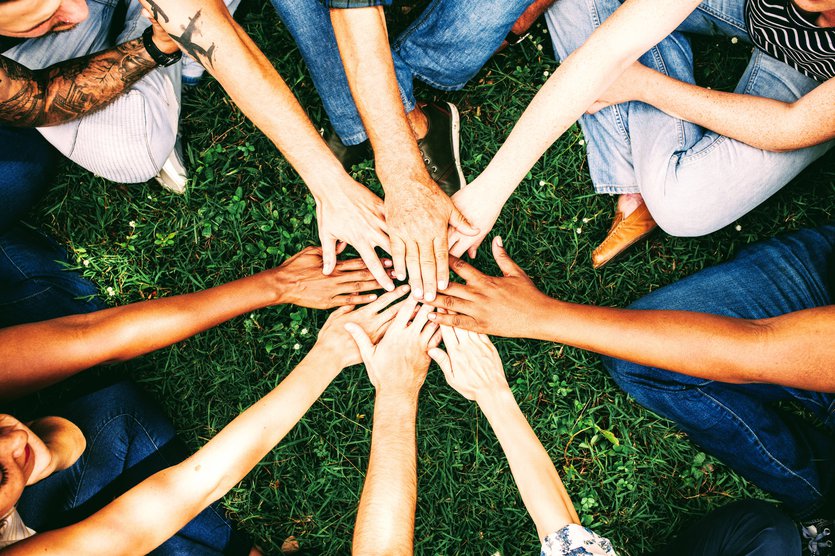
9. You have someone to share your feelings and opinions with
One of the benefits of family travel we like the most is the possibility of sharing what we are observing and getting to know, most of the time places we have dreamed of visiting for quite a long time.
Talking about what we are seeing and feeling generates an incredible connection with the place you are meeting, and with the people with whom you are travelling. In our case, it makes us feel much more connected because it allows us to generate a fluid conversation of opinions, while we make sure we are not missing anything important. Many eyes look better than just two! It is exquisite to be able to say openly what you think of a place and contrast it with the opinion of others. Becoming a family that travels the world has been one of my most valuable life experiences.
Also, all experiences will not only get into thoughts and feelings of the moment, but they would become collective memories that will come out in hundreds of future conversations, anecdotes with which you could be laughing for years, stories to tell your future nephews, children and memorable moments with the people you love most and that you will never forget.
10. You may learn the art of slow travel
I have been travelling solo through Europe since I was 18. Bremen, Amsterdam, Berlin, Southampton, Lausanne, Bucharest, and Vienna are the trips that come to mind most quickly when I remember those days. I fully enjoyed those city trips – sightseeing to exhaustion, answering to nobody than myself, being in charge of my own plans, meals, and budget.
When I met my husband, Sinan, I thought I would still want to travel solo at least a couple of times a year to simply stay true to what travel meant to me as a whole. Slowly, however, it turned out we were never closer to each other than when travelling.
From planning trips over a glass of wine in our kitchen to looking up destinations to packing and organizing ever more elaborate road trips, we spent time in Italy, Turkey, Romania, Austria, and France. Together, we planned itineraries I could not have dreamt of doing alone. We discovered hidden rural areas, went hiking in remote places, stayed in authentic local accommodations, went shopping at traditional markets and cooked our meals, and fearlessly made off the beaten path our motto.
When our daughter was born, it only came naturally that she would join the team – we’ve become a family that travels the world. From a weekend escape to the Slovenian Alps to an elaborate road trip in Andalusia, family travel taught us to slow down and create a home away from home everywhere we stop. We’ve also learnt how to find great places to travel with family.
We invariably end up at the local playground, supermarket, and pharmacy, which gives us a much better opportunity to interact with the locals and focus on the atmosphere of a place, rather than its most important sights. Looking at destinations from my husband’s, mine, and my toddler’s perspective is much more enriching than doing a simple cityscape. For me, one of the most significant benefits of family travel is mastering the art of slow travel.
I am thus not surprised at all to discover that I do not miss solo travel at all. On the contrary, when I do travel solo I miss my two travel companions so much that I feel incomplete. Travel is, thus, in my experience and for my family, THE thing that holds us together and keeps us growing stronger.
11. Travel with friends is fun!
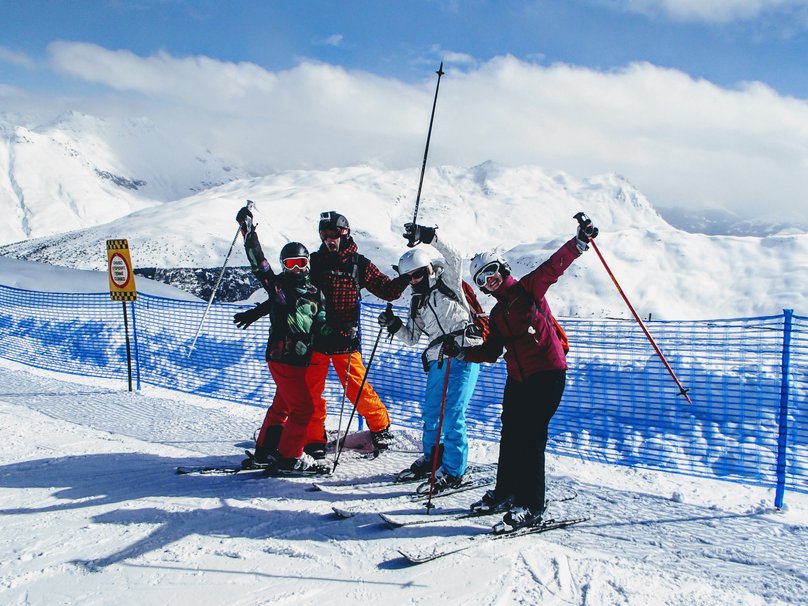
I always try to gather as many friends as possible for my trips. It doesn’t matter if it’s an only weekend outing or 2-week holidays – the more people the better. And it ALWAYS is so much fun! For me, it’s one of the most important advantages of travelling with friends.
I’m lucky enough to have a bunch of friends who are open to travel, try new things, practice sports, play games and get from life as much good stuff as possible. Simply said, the best ones to travel with.
Singing “Happy Birthday” at 2244 metres in Slovenia, dancing on the table in an après ski disco, sliding on snow down the hill on a big foil, playing charades – this is barely a fraction of fun things which we tend to do with friends on holidays.
Besides, very often friends mobilize me to do stuff which I wouldn’t do on my own. I’m so grateful to my friends that they got me to do such fantastic things which, that’s for sure, I’d never do myself.
For instance, when we arrived in Saalfelden during our holidays in 2015 I was very tired after many hours drive and all I wanted at that time was going to bed.
“Are you nuts?! Let’s go to Kaprun and check out the festival there, it’ll be fun!” exclaimed my friends.
And they were right – it was great and I was happy I’d gone there. Well, the list of great things my friends got me to do goes on and on – kayaking in Slovenia, canyoning in Austria, night hiking in Polish Beskidy mountains – you name it!
Oh dear, such heart-warming memories really keep me going in everyday (sometimes dull) routine!
12. Loneliness is unhealthy
Solo travel can get lonely at times – it’s one of the biggest disadvantages of solo travel.
Solo travellers are usually experts at making friends while traveling but most of the time, they are on their own. And loneliness isn’t natural for people.
I think we can say that the benefits of group travel include also decreasing the feeling of loneliness.
In 2015, investigators from Brigham Young University researched numerous studies on loneliness done on several hundred thousand people. The results showed that social isolation resulted in a 50% increase in premature death.
Loneliness is also linked with increased cholesterol level, high blood pressure, depression and decrease in cognitive abilities (ouch!).
Human beings evolved to live with others. Long ago, we hunted in small groups, where social interaction helped protect from predators. Being alone without support used to be dangerous and stressful. You’d have to be constantly on alert, ready to turn on your fight or flight mode. It’s still part of our natural instincts.
Of course, sometimes it’s necessary to get away from city hustle and bustle, problems, other people and just be there with yourself. But a few days is enough. More just isn’t healthy. People are social creatures who need to interact with others.
Also, group travel doesn’t prevent you from making friends while traveling. In some situations, it may even make it easier!
13. Travelling with others makes relationships stronger
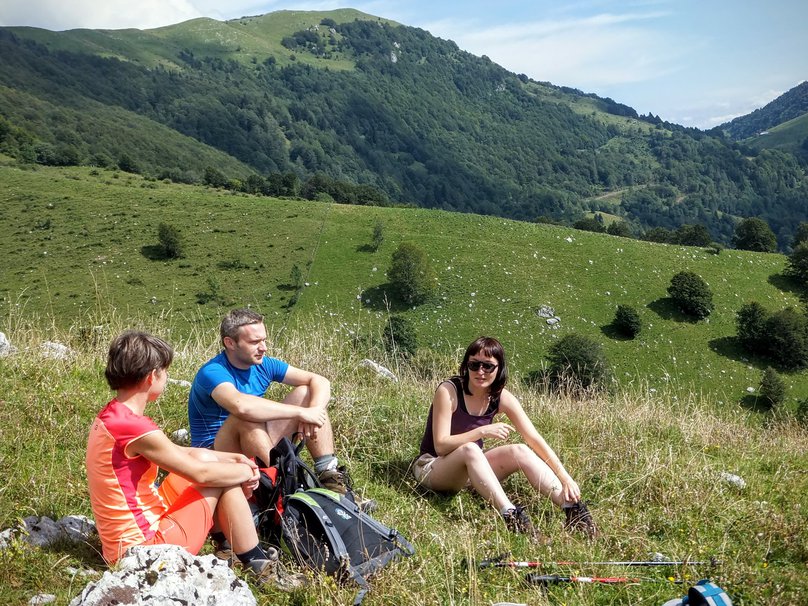
It seems the exciting things which we did together made us much closer – it’s one of my favourite benefits of group travel.
I’ve noticed that, even if I don’t see my travel friends for a long time, I feel like we just met yesterday. And we have so many things to talk about when we get together – memories of fun things we did together are just a small part of our conversations – we’re always busy creating new, exciting ones
Interestingly, I’ve observed that travel with friends makes friendship lasts longer. I have the closest contact and longest relationships with the people I travelled with.
Friendships with folks I just worked or studied with, or met up occasionally for a beer usually don’t stand the test of time. Also, meeting in a pub or shopping together once in a while isn’t enough for me. It may be enough to maintain the superficial acquaintance but it doesn’t get the friendship closer.
14. Group travel is often less stressful
Having no one to depend on while travelling is one of the most significant solo travel problems.
When you travel in a bigger group you can be more relaxed about organizational side of your trip. Forgot to take toothpaste and all the shops are closed? Here you are. Nothing left to eat but no restaurant or shop within 10 kilometres? Help yourself. Forgot the map? No worries, I’ve brought mine.
When we were recently travelling to Livigno, we got stuck in an enormous traffic jam and, as a result, we arrived at midnight. Had it not been for our friends who arrived earlier, we would have needed to spend the night in a car because the keys to our apartment were only available to pick up until 9 PM. It was a great relief to find our friends waiting for us in a warm apartment!
Other situation: in September 2018 I went on a week-long solo trip to Tatra National Park (no one was able to join me at that time). Unfortunately, the weather got very bad on the second day – it was cold and rainy and there was a strong wind blowing in the mountains. I was miserable because I wasn’t able to go on long hikes as I’d planned to and didn’t have a company for a pub crawl in Zakopane.
One day I decided to visit a cave in Koscieliska Valley (caves are great to visit on a rainy day). At the cave’s entrance, it turned out I was the only person who came up with such an idea. I felt very uncomfortable and anxious about venturing into the cave alone but eventually, I did it. I came out from the cave all sweaty and breathless – I was so afraid that I decided to run along the cave’s corridor. Such a lovely experience.
However, solo travel has its benefits too, that’s for sure. Actually, it can also be a great adventure, as it gets you out of your comfort zone. This can do wonders to your self-confidence.
Besides, I have to admit that finding proper people to travel with might be challenging (especially nowadays when people have loads of “friends” on the Internet, but not many real ones outside the net).
Also, travelling with your partner does have its disadvantages and challenging situations. Sooner or later there will be a need for a compromise (which makes happy nobody).
There are no black-and-white situations in life, but, all in all, I definitely prefer to travel with my spouse and friends.
Why Are Some People More Creative Than Others?

Creativity is often defined as the ability to come up with new and useful ideas. Like intelligence, it can be considered a trait that everyone—not just creative “geniuses” like Picasso and Steve Jobs—possesses in some capacity.
It’s not just your ability to draw a picture or design a product. We all need to think creatively in our daily lives, whether it’s figuring out how to make dinner using leftovers or fashioning a Halloween costume out of clothes in your closet. Creative tasks range from what researchers call “little-c” creativity – making a website, crafting a birthday present or coming up with a funny joke—to “Big-C” creativity: writing a speech, composing a poem or designing a scientific experiment.
Psychology and neuroscience researchers have started to identify thinking processes and brain regions involved with creativity. Recent evidence suggests that creativity involves a complex interplay between spontaneous and controlled thinking – the ability to both spontaneously brainstorm ideas and deliberately evaluate them to determine whether they’ll actually work.
Despite this progress, the answer to one question has remained particularly elusive: What makes some people more creative than others?
In a new study, my colleagues and I examined whether a person’s creative thinking ability can be explained, in part, by a connection between three brain networks.
Mapping the brain during creative thinking
In the study, we had 163 participants complete a classic test of “divergent thinking” called the alternate uses task, which asks people to think of new and unusual uses for objects. As they completed the test, they underwent fMRI scans, which measures blood flow to parts of the brain.
The task assesses people’s ability to diverge from the common uses of an object. For example, in the study, we showed participants different objects on a screen, such as a gum wrapper or a sock, and asked to come up with creative ways to use them. Some ideas were more creative than others. For the sock, one participant suggested using it to warm your feet—the common use for a sock—while another participant suggested using it as a water filtration system.
Importantly, we found that people who did better on this task also tended to report having more creative hobbies and achievements, which is consistent with previous studies showing that the task measures general creative thinking ability.
After participants completed these creative thinking tasks in the fMRI, we measured functional connectivity between all brain regions—how much activity in one region correlated with activity in another region.
We also ranked their ideas for originality: Common uses received lower scores (using a sock to warm your feet), while uncommon uses received higher scores (using a sock as a water filtration system).
Then we correlated each person’s creativity score with all possible brain connections (approximately 35,000), and removed connections that, according to our analysis, didn’t correlate with creativity scores. The remaining connections constituted a “high-creative” network, a set of connections highly relevant to generating original ideas.
Having defined the network, we wanted to see if someone with stronger connections in this high-creative network would score well on the tasks. So we measured the strength of a person’s connections in this network, and then used predictive modeling to test whether we could estimate a person’s creativity score.
The models revealed a significant correlation between the predicted and observed creativity scores. In other words, we could estimate how creative a person’s ideas would be based on the strength of their connections in this network.
We further tested whether we could predict creative thinking ability in three new samples of participants whose brain data were not used in building the network model. Across all samples, we found that we could predict—albeit modestly—a person’s creative ability based on the strength of their connections in this same network.
Overall, people with stronger connections came up with better ideas.
What’s happening in a ‘high-creative’ network
We found that the brain regions within the “high-creative” network belonged to three specific brain systems: the default, salience and executive networks.
The default network is a set of brain regions that activate when people are engaged in spontaneous thinking, such as mind-wandering, daydreaming and imagining. This network may play a key role in idea generation or brainstorming—thinking of several possible solutions to a problem.
The executive control network is a set of regions that activate when people need to focus or control their thought processes. This network may play a key role in idea evaluation or determining whether brainstormed ideas will actually work and modifying them to fit the creative goal.
The salience network is a set of regions that acts as a switching mechanism between the default and executive networks. This network may play a key role in alternating between idea generation and idea evaluation.
An interesting feature of these three networks is that they typically don’t get activated at the same time. For example, when the executive network is activated, the default network is usually deactivated. Our results suggest that creative people are better able to co-activate brain networks that usually work separately.
Our findings indicate that the creative brain is “wired” differently and that creative people are better able to engage brain systems that don’t typically work together. Interestingly, the results are consistent with recent fMRI studies of professional artists, including jazz musicians improvising melodies, poets writing new lines of poetry and visual artists sketching ideas for a book cover.
Future research is needed to determine whether these networks are malleable or relatively fixed. For example, does taking drawing classes lead to greater connectivity within these brain networks? Is it possible to boost general creative thinking ability by modifying network connections?
For now, these questions remain unanswered. As researchers, we just need to engage our own creative networks to figure out how to answer them.
This article was originally published on The Conversation. Read the original article.
ABOUT THE AUTHOR(S)
Roger Beaty is a Postdoctoral Fellow in Cognitive Neuroscience, Harvard University.
Source https://www.scientificamerican.com/article/why-are-some-people-more-creative-than-others/
Source https://overhere.eu/blog/5-reasons-why-solo-travel-is-not-for-me/
Source https://www.scientificamerican.com/article/why-are-some-people-more-creative-than-others/